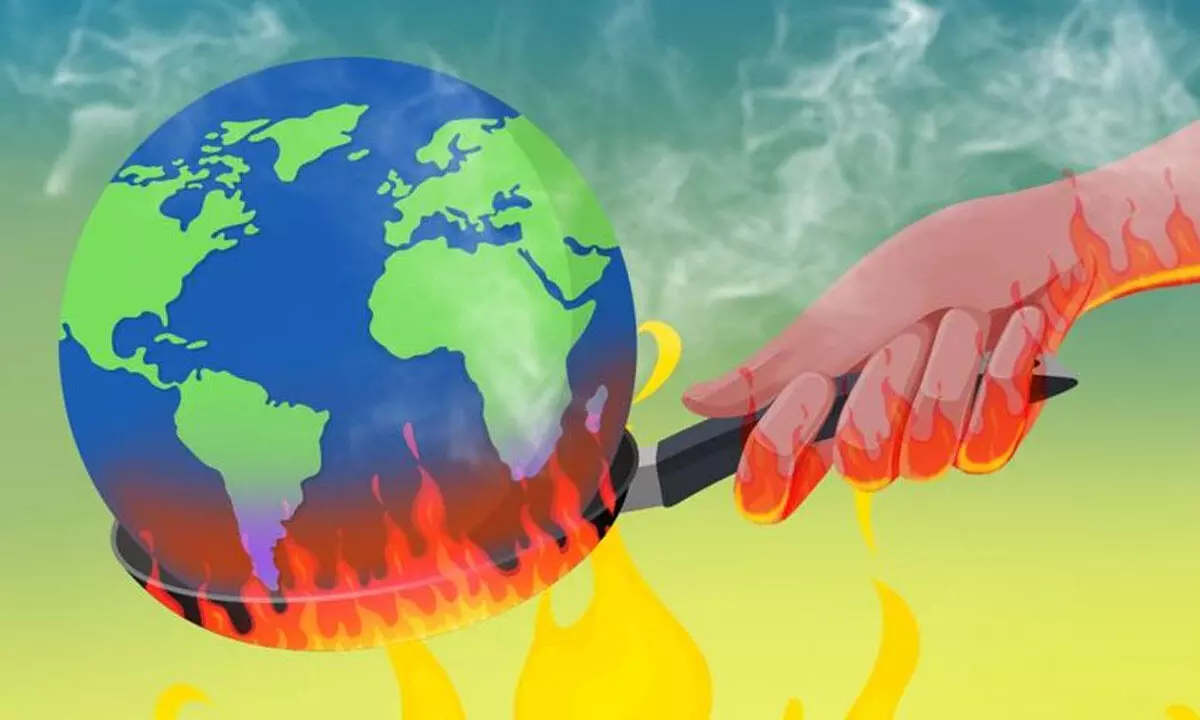A matter of life and death

Planetary health is about human health. It is time we made this connection
We know that climate change impacts weather, which in turn devastates lives and livelihoods. But what we don’t discuss enough is how these extremes in weather impact human health. In this season of despair, when temperatures spiralled out of control, we learnt how heat could kill. We also learnt how the rise in minimum temperature—night-time heat—could be the cause of human death. It is critical that we join the dots of what seems like a faraway crisis of a changing climate to what it can do to our health.
This year, the world has seen scorching temperatures. And this heat has taken lives—in Delhi, when I write this at the end of June 2024, it is estimated that some 270 people have died because of extreme heat. But I repeat this number with caution. We really don’t know how many have died, because heat is an exacerbating factor to existing health ailments like cardiovascular or kidney diseases. Many more may have succumbed to heat this summer, but doctors would have written it down to underlying conditions. We know that the most vulnerable are those exposed to heat because of their work conditions—from construction workers to farmers. It is also the poor, who do not have access to electricity and so, cannot use appliances to cool down their bodies. But their deaths are not recorded as heat stress; only that they are either poor, or old and died of “unknown causes”. Heat is not listed in the notified diseases of the country, which also means that it is not required to be recorded or to provide information for further action. So, we must recognise that we know little about the health burden and deaths because of the ferocious burn we have seen of late.
However, research is now pointing to the dynamics of deadly heat. First, it is now being understood that the rise in night-time heat is the cause of maximum mortality. A 2022 paper in the British medical journal The Lancet found “that the relative mortality risk on days with hot nights could be 50 per cent higher than on days with cooler night temperatures.” The reason, the authors explain, is that heat affects sleep; does not allow the body to repair itself; and this, in turn, exacerbates the health stress. Second, we know that evaporation is the method for our bodies to cool down; but this becomes ineffective when humidity increases beyond 75 per cent—also known as wet bulb phenomenon. So, thermal discomfort is what needs to be understood, not just temperatures.
The worry is that we are seeing an increasing trend in all three killer factors, particularly in urban centers. Here, temperatures are rising beyond human tolerance; humidity is increasing; and so is the night-time heat. A recent report by my colleagues at the Centre for Science and Environment tracked heat trends across major cities of India and found that ambient air temperatures are increasing in cities, as against the average for the country. Then Hyderabad, Delhi, Mumbai, Kolkata and Chennai are seeing a more humid summer—5-10 per cent increase in the last decade (2014-2023) as compared to 2001-2010. Only Bengaluru has not shown any increase in summer humidity level and this needs further investigation.
Then, the report finds that cities are not cooling down at night—across all climatic zones. It notes that during summers of the decade of 2001-10, night temperatures dropped by 6.2°C to 13.2°C from the day-time peak. But in the last 10 summers, this difference between day and night temperatures (maximum and minimum) is decreasing. Hyderabad is down by 13 per cent; Delhi by 9 per cent and Bengaluru by 15 per cent. Kolkata, which already had the dubious distinction of a smaller difference between day and night temperatures, is now worse, because of higher humidity levels.
We know that all this is part of that double-whammy we see in our world. On the one hand, there is a warming Planet—this year has broken all previous high temperature records. Worse, there are changes afoot in the way the weather behaves in terms of erratic rain, intense heat and changes in wind patterns. All this makes heat more stressful; more deadly. On the other hand, our cities are seeing a dramatic change in micro-climate—the heat island effect is amplified as concrete takes over open and green spaces; traffic and the use of energy for cooling add to the heat being trapped in the air.
This summer has taught us new lessons in heat stress. The fact is, climate change will throw us many such surprises in terms of impacts on human health. Even now, this science is not understood. What climate change will do is bring the impacts closer to our bodies and our health. This is why planetary health is about human health. It is time we made this connection. It is time we understood why climate change is an existential crisis; it is literally about life and death.
(Courtesy: https://www.downtoearth.org.in/; Writer is Director General of CSE and editor of Down To Earth, an environmentalist who pushes for changes in policies, practices and mindsets)




